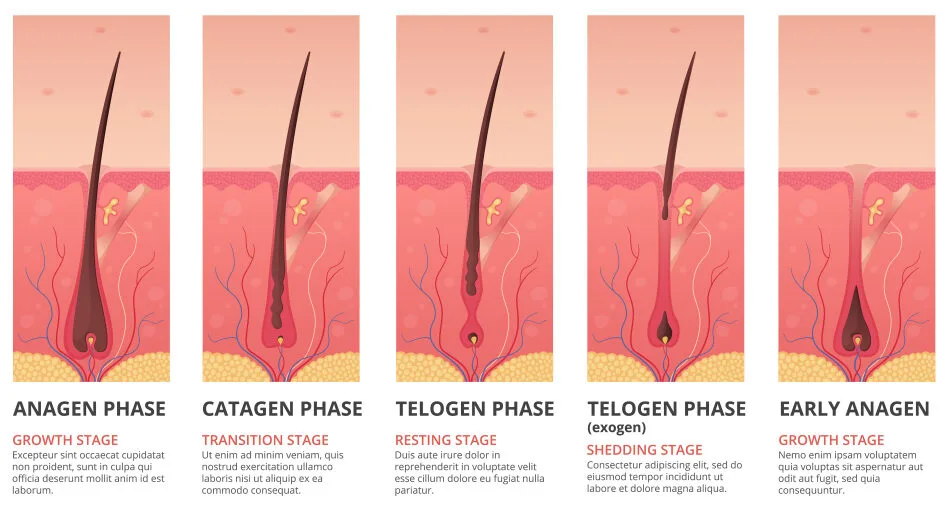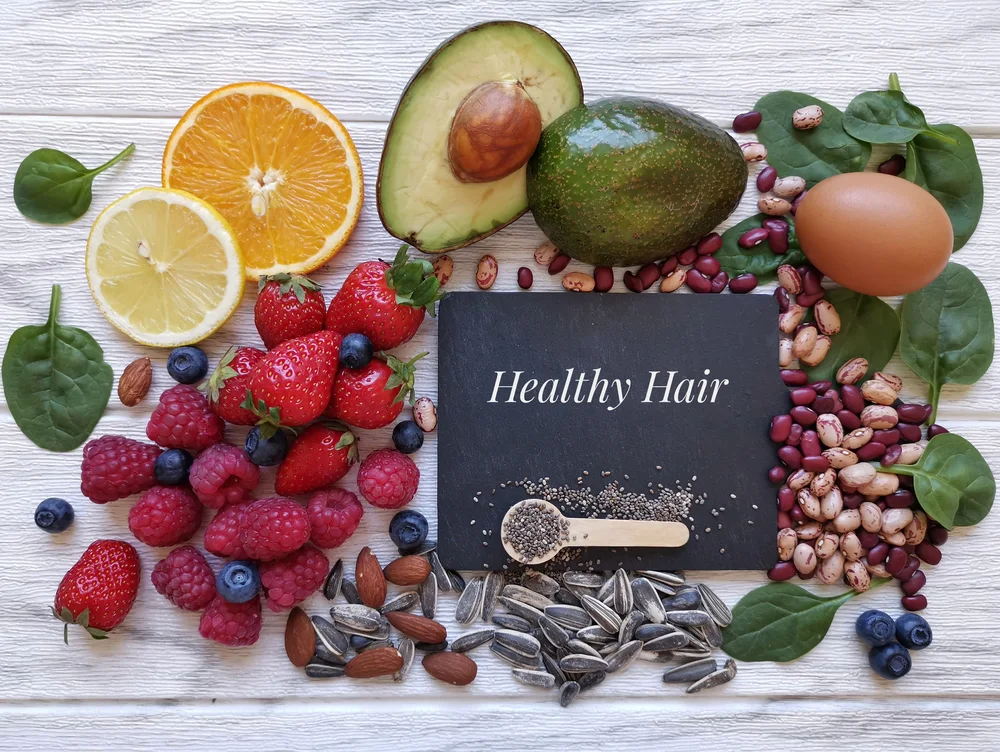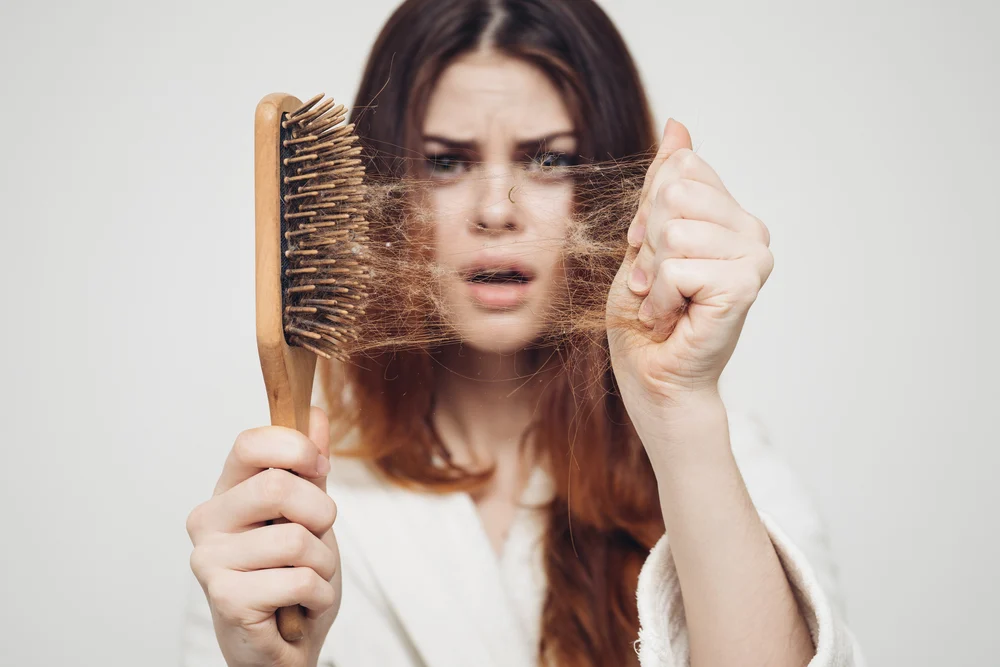Jump to:
If you’ve landed on this page, you’re either doing a research project, you lost a bet, or you’re just curious. In any case, we’re hair experts, and you can bet that we’ll answer your question and more below. Read on to learn all you need to know!
How Many Strands of Hair Are on a Head?

Bokeh Stock/Shutterstock
On average, a human has more than 100,000 individual hairs on their head. Although you lose around 25-50 hairs every day, they are constantly replaced by new ones that grow at around the same rate.
If you’ve ever brushed your hair and looked at the hairs that came out in the brush, you might have some questions.
Why does the amount of hair on your head seem to stay the same? Because your hair is replacing itself at the same rate you lose it. How many strands of hair on your head is called hair density.
Let’s take a look in-depth at some of the most common questions about hair density.
Hair Density
Hair density is how many hair follicles you have on your scalp. There are a lot of factors that go into how many hairs fit on your head in total. For one thing, your race is a contributing factor.
Caucasian people have the highest hair density, while Asian people have a significantly lower hair density. Black people have a hair density somewhere between the two, but their hair appears much thicker because of the texture.
Another factor that contributes to hair density is the natural color. Blonde is the rarest natural hair color; people with blonde hair tend to have around 150,000 hairs, whereas people with brown hair have about 100,000.
Redheads have the least amount of hair at about 90,000. Interestingly, biological sex does not impact hair density, though men tend to have hair that grows faster than women.
Age is not a factor in hair density. You have the same amount of follicles for your whole life. However, your hair grows less as you get older. This fact makes your hair appear thinner and shorter as a result.
The Growth Cycle of Hair

ONYXprj/Shutterstock
There are four stages in the cycle of hair growth. Fortunately, not all of the hairs will be in the same phase at once, otherwise humans would undergo a molting pattern similar to birds.
Instead, our follicles are staggered, which is why we lose around 50 hairs a day. Most of your hair will be in the growing phase at any given moment. There are four phases of hair growth:
1. Anagen, the Growing Phase
Anagen is when hair is actually growing. This phase determines the maximum length of hair. It lasts for two to seven years.
It can be funny to think that some of the hairs on your head can be growing out for so long, but it’s the truth! The longer your anagen phase, the longer your hair can be and the thicker it will appear.
2. Catagen, the Transition Phase
For about ten days, the hair follicle shrinks and detaches from the dermal papilla. Dermal papillae are small extensions of the dermis into the epidermis. They reside beneath the hair follicle, but dermal papillae are all over your skin.
3. Telogen, the Resting Phase
During telogen, your hair will rest. At that point, it’s not growing or ready to fall out. Only up to 15% of the hairs on your head are in the resting phase at one time, the rest of them are in the other three phases.
4. Exogen, the New Hair Phase
Exogen is when your hair sheds. Those 50 hairs you lose every day are naturally in the exogen phase. When your hair falls out, it makes room for new hair to take its place. As you get older, the length of the anagen phase naturally decreases.
Because of this phase change, older people tend to have thinner and more brittle hair than younger ones. That said, there are things we can do to mitigate this effect. Eating healthy and getting regular exercise are crucial for overall hair health.
Still Curious? Click to Learn About the Most Common Hair Colors
The Best Vitamins for Your Hair

Danijela Maksimovic/Shutterstock
If you’re interested in vitamins to keep your hair healthy and thick, here are some nutrients to look into:
- Biotin: Biotin is a B-Vitamin for your hair and nails.
- Iron: Anemia can be a cause of hair loss. If you have heavy periods or are anemic for any other reason, taking iron supplements can help you with your hair.
- Vitamin C: Iron doesn’t help if your body isn’t absorbing it. Vitamin C helps your body process iron.
- Vitamin D: This vitamin is crucial for bone health but also the health of your hair. Doctors link low vitamin D levels to hair loss.
- Zinc: This is a vitamin your body can’t produce on its own. You have to get it from food and possibly from vitamin supplements. A zinc deficiency can affect your senses of smell and taste and harms your hair.
There are also multivitamins you can get that are specifically balanced for hair growth. Look at what’s in them and consider what might be causing your hair to thin before making any decisions about which to choose.
Myths About Hair Density

ShotPrime Studio/Sutterstock
You might have heard from your parents, grandparents, or maybe an aunt or uncle certain things about hair and how it works. There are dozens of things people say about hair that aren’t true. Let’s look at some of the most common ones below.
It’s Possible to Make Your Hair Thicker
Hair density is the number of follicles on your scalp. There is no way to put more follicles on your head than you already have, that number is finite.
While there are ways to make individual hairs heavier and give the appearance of thickness, you cannot make your hair any thicker than it already is.
If You Shave, the Hair Grows Back Thicker
This is a favored wive’s tale of the older generation. I remember when I was taught to shave, my mother told me ‘When you shave your legs it’s going to start growing thick like a man’s hair.’
That never happened, and it doesn’t happen. If you shave your arms, it won’t make your arms hairier, that isn’t how hair works. Individual hairs can weather damage over time and start to look thinner because of it.
The probable origin of this myth is that a young person shaving noticed the hair growing back in after was more healthy and appeared thicker than the original.
Fine Hair and Thin Hair are the Same Things
Thin hair has to do with hair density. That is the one that has something to do with how many hairs you have on your head, and the one to worry about in terms of balding.
Fine hair is what happens when the individual strands of hair are leaner than average. You can have fine hair and still have a full head of hair. Thickening shampoos are more helpful to fine hair and do nothing for thin hair.
All Hair Loss Is Irreversible
Some kinds of hair loss are irreversible. Genetic male pattern baldness, for example, cannot be reversed. However, most causes of hair loss in both men and women can be treated and reversed, and hair growth stimulated again.
At the very least if you are experiencing thinning or hair loss it is worth looking into and finding out whether or not there’s something you can do about it if that’s what you want to do.
You Can Increase the Number of Hair Follicles You Have
Though the hair on your head might change, your hair follicles remain the same. There are hundreds of thousands of hairs on the average person’s head.
The exact number is different for everyone, just like everyone’s exact number of hair follicles. But whatever the number of hair follicles you’re born with, they stay the same throughout your life.
So, How Many Strands of Hair Are on a Head?
People tend to have about 100,000 hairs on their heads. That said, there are a lot of factors that could make that number vary widely.
Everyone is different, so it follows that everybody’s hair is too. Watch your vitamins, don’t overbrush, and there is no reason you can’t have healthy, shiny hair for years to come.
